If you’re going to travel, then you’re going to want to take some photographs, right? So, what’s the perfect camera for a digital nomad? Well, spoiler alert, we don’t have the perfect answer for that – as “it depends” is the only truth here. But we can point you in the right direction.
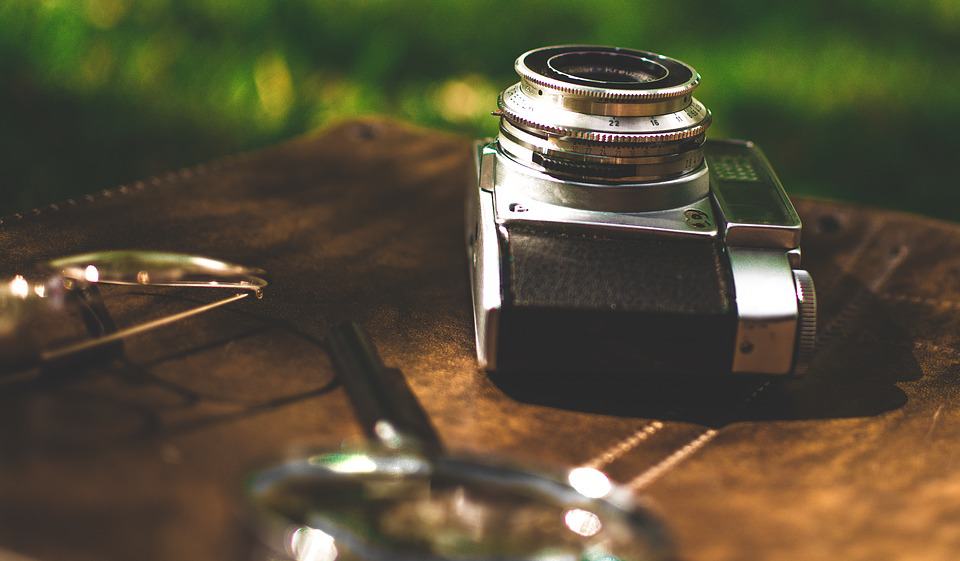
Table of Contents
The First And Most Important Thing To Know
There are very few “bad cameras” in the world, today. If the camera you choose was made in the last 10 years or so, don’t spend too much time worrying if you’ve got the right one – you’re pretty much guaranteed to have a camera that can do a job.
Don’t get stuck browsing endless statistics and worrying that you got the wrong thing. If you don’t know much about cameras, it will be 2-3 years before you know enough about your camera to get the most out of it. It will be another 2-3 years before you actually want to upgrade to something else.
This is good news it means that digital nomads can think about what they want from a camera and then buy something that feels right without any buyer’s remorse.
Smartphones Rock: “The Best Camera Is The Camera You Have With You.”
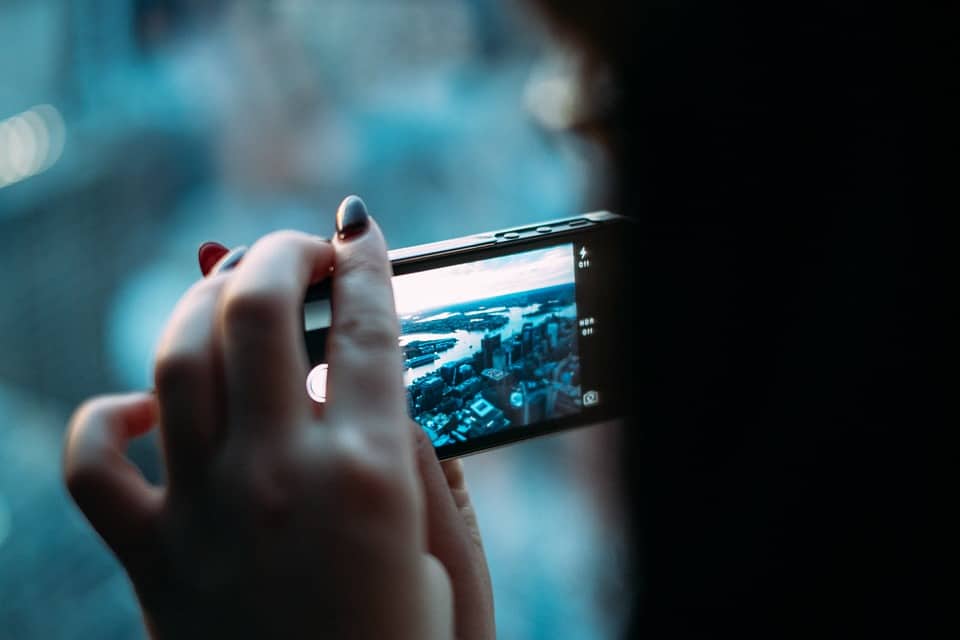
Confession time – I don’t use a smartphone camera. I am so ham-fisted that I find that most photos I take with a smartphone end up blurry or I simply miss the shot I wanted.
However, my experience is certainly not the majority experience. If your photos are OK with a smartphone – you might want to opt for a smartphone camera. Here’s why:
- If you only put your photos on Facebook or Instagram – smartphones are more than good enough. If you have a mid-tier to top-tier modern smartphone then they will take decent shots in low light, offer plenty of zoom and you can edit stuff on the fly.
- You probably always carry your smartphone with you – you are much less likely to miss a shot if you have a camera on you.
- You already own a smartphone – I can’t think of a digital nomad on earth that doesn’t have a smartphone. So, this is not just convenient but it’s also the lowest cost option.
It is worth remembering that the vast majority of DSLR cameras bought by enthusiastic photographers end up sitting in a box at the back of somebody’s closet gathering dust. This is because they are bigger and heavier than most people want a camera to be.
Your smartphone won’t end up in the closet.
There are downsides to a smartphone camera though and it’s worth keeping these in mind:
- If you want to print your photos at any point – smartphone shots are going to make for very small prints. This is a constraint of the tiny sensor in a smartphone.
- Most smartphones don’t shoot in RAW – this means there is a limit to the amount of editing you can do to your photos.
- Smartphones that shoot in RAW still don’t capture as much detail as a camera with a bigger sensor
- Smartphone lenses are cheap and plastic – much of the image on a smartphone is thanks to clever software augmentation, if you want a more authentic photo, you need a camera that can take one
- There are certain things a smartphone camera just can’t do well – sports photography, astrophotography, macro photography, etc. are all better done with a different camera
Our choices: Megan has an old Samsung Galaxy and I have an Honor 8X. Neither of us use the smartphone cameras for much more than the occasional selfie or a video on the fly (which is more Megan than me). A smartphone camera will never be our main camera because we want to create bigger and better images than a smartphone can – at least, in part, for this blog.
Stop! Important Camera Bits Explained!
We mentioned sensor size in the last bit about smartphones and that’s not the only piece of terminology that you need to understand if you want to buy the right camera for your digital nomad journey.
Sensor Size
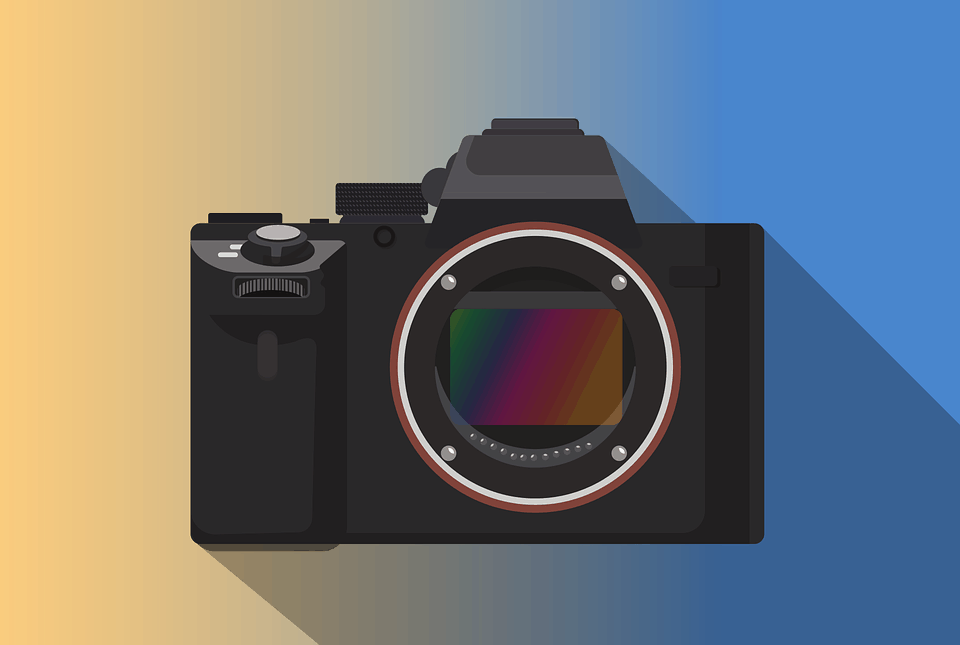
The sensor is the bit in your camera which collects the light (the word “photography” literally means light writing).
There is a school of thought which says, “the bigger the sensor the better”. This isn’t quite true, but it is true that sensor size has an impact on how you can use your photos.
| Sensor Type | Width X Height | Diagonal (mm) | Sensor Area (mm2) | Crop Factor |
| Large Format | 102 x 127 | 163 | 12,954 | 0.30 |
| Medium Format | 53.7 x 40.2 | 67.08 | 2,159 | 0.65 |
| Full Frame (35 mm) | 35.8 x 23.9 | 43.2 | 860 | 1.0 |
| APS-H | 27.9 x 18.6 | 33.5 | 519 | 1.29 |
| APS-C | 22.3 x 15.6 | 28.3 | 369 | 1.53 |
| APS-C (Canon) | 22.3 x 14.9 | 26.82 | 332 | 1.61 |
| Micro Four Thirds | 17.3 x 13 | 21.6 | 225 | 2.00 |
| 1” Sensor | 13.2 x 8.8 | 15.9 | 116 | 2.72 |
| Smartphone | 3.75 x 2.5 | 4.5 | 9.4 | 9.60 |
The advantages of big sensors tend to be: you can print bigger images AND you can crop your images more closely (because there’s more information to use).
However, a large format digital camera would cost you 6 figures. It would need its own suitcase to travel with and, for the moment at least, the lack of resolution means that you might not be overwhelmingly impressed with the results.
The vast majority of digital nomads will find that they will be best served by a camera that falls somewhere in the smartphone to full-frame range.
Medium format cameras are lovely but they’re big and heavy and very expensive. One day, if we settle down, we’d love to get involved with medium format photography, but it won’t be today.
Focal Length
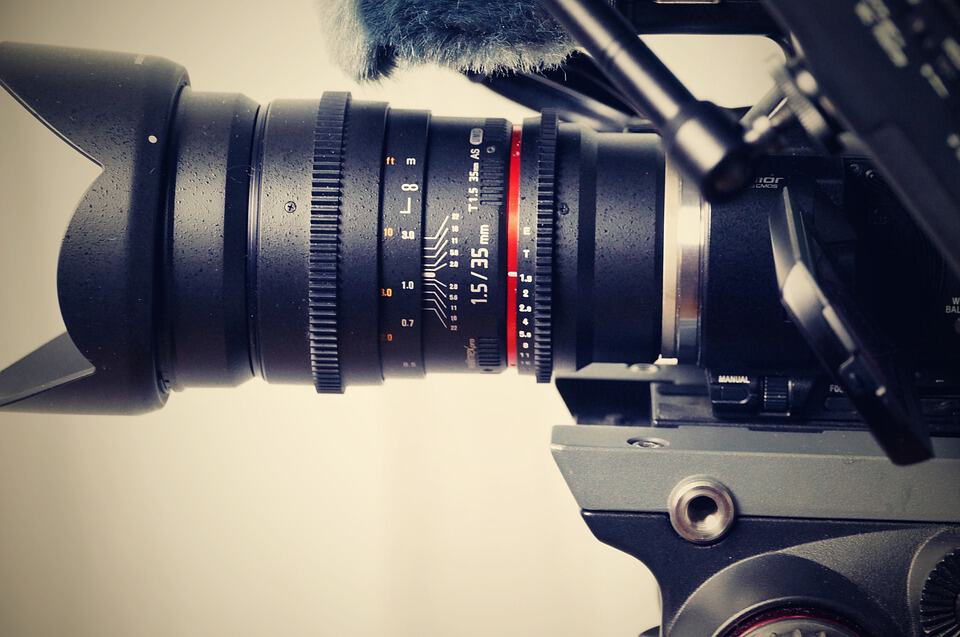
The focal length of a lens is given as a value in mm. This can range from about 6 mm to about 1200 mm.
The smaller the number, the wider the angle of view. A lens with a 6mm focal length is so wide that you can get 180 degrees or more in the shot but this comes at the price of turning the whole image into a “fisheye” circle.
A 35mm lens is said to offer a traditional “field of view” (it’s roughly what you see with both eyes open) and a 50 mm lens is equivalent to what you can see with an eye closed.
A lens with a large focal length is commonly referred to as a “telephoto” lens. This is true of focal lengths larger than 100 mm.
Except it’s not quite that simple. The “field of view” for lenses is always talked about in terms of using a full-frame camera.
To get the field of view from any other camera you have to multiply the focal length by the “crop factor” of the camera’s sensor.
So, a 23 mm lens on a standard APS-C offers roughly the same field of view as a 35 mm lens on a full-frame. (That’s 23 x 1.5 = 34.5 mm)
Then just to make it a little more confusing. There are also zoom lenses out there. A zoom lens offers the chance to get multiple focal lengths out of a single lens. Typical zoom lenses include the 16 – 35 mm, 24 – 70 mm, 70 – 200 mm, etc.
A lens with a single focal length is known as a “prime lens”.
Note: There are some photographers that insist that prime lenses are somehow “better” than zoom lenses. This is not entirely true. It is true that prime lenses tend to do one job very well, but zoom lenses offer far more flexibility.
I typically shoot with a 23 mm prime lens, but I take two zoom lenses everywhere, my photos of Ha Long Bay, for example, would have been awful without a zoom. Don’t buy lenses to please strangers on the Internet, buy them for your use.
Aperture Size
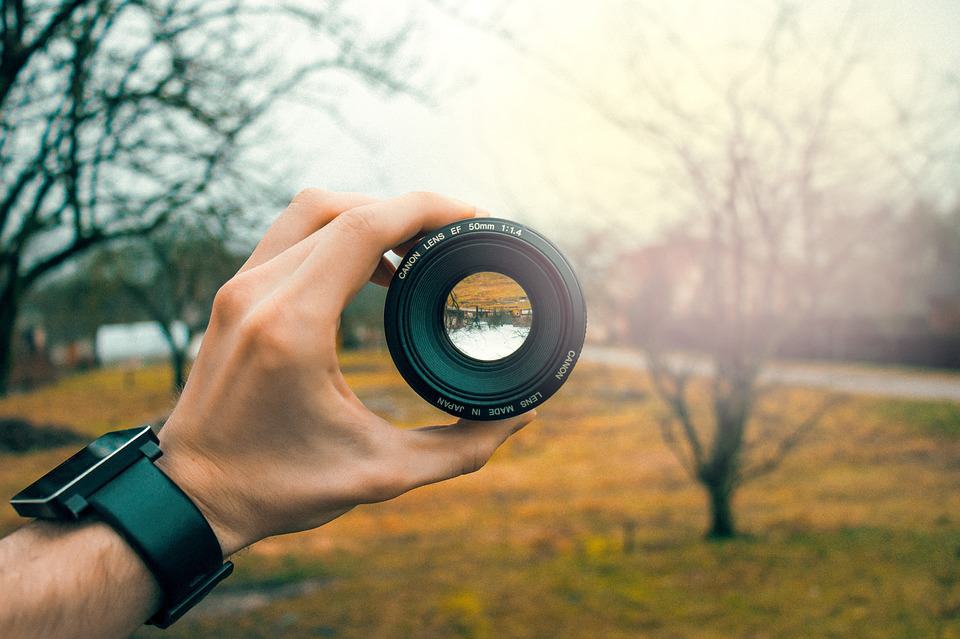
The aperture represents the biggest possible hole at the back of your lens that lets light through to the sensor. On most cameras, but not all, you can make the aperture smaller than the maximum.
Confusingly, the smaller the number associated with the aperture of a lens, the bigger the aperture is. Aperture is given as an F-number.
So, a 50 mm F1.1 is a lens with a bigger maximum aperture than a 50 mm F2.0.
Why does this matter? The bigger the maximum aperture, the more light that you can let on to your sensor, this means that in theory, the larger the maximum aperture the easier it is to shoot in low light conditions.
It’s also worth noting that a bigger aperture also makes it easier to blur out the background of your photos (that blurry effect is called “bokeh”).
On zoom lenses, it is possible for there to be a range of maximum apertures. So, you might see a lens like this 18 – 55 mm F 2.8 – F 4.0. That means that at the widest focal length (18 mm) the largest aperture is F2.8 but at the narrowest focal length (55 mm) the largest aperture is only F4.0.
A basic rule of thumb is that the lower the F-number the more desirable the lens. However, it’s worth noting that this normally means that a lens will be both more expensive and much heavier. You may find it worth sacrificing something in aperture in order to keep weight down in your bag and to save some money.
Aperture is one of the three parts of the “exposure triangle”. That means it is one of three ways that you can alter the quantity of light arriving on your sensor. The other two are ISO and shutter speed and they are a function of your camera and not of your lens.
OK, that’s enough technical stuff for now… let’s get back to looking at cameras.
The Point And Click: The Camera That Isn’t Dead, Yet
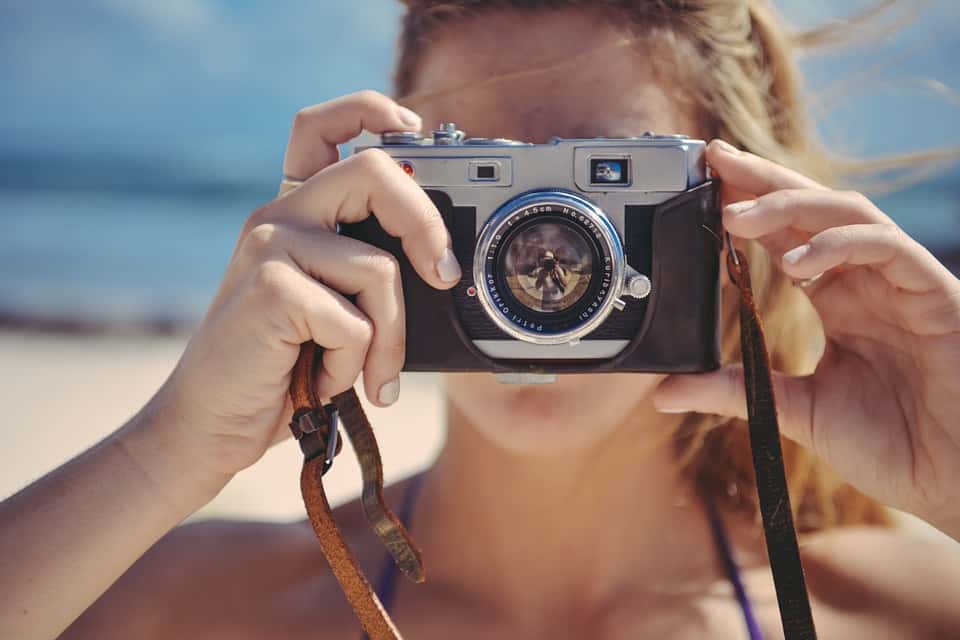
Digital nomads who want to go beyond their smartphone might decide to stop at the next stage of camera – the point and click.
It is true that the point and click market has been completely decimated by the smartphone market, many low-end point and clicks were barely better than their smartphone competitors anyway. However, it’s not dead. (In fact, one of my favorite cameras is a point and click.)
We don’t think the point and click market will ever die out, either.
Unlike smartphone cameras, point and clicks come in two main types.
The two main types of point and click camera:
- The fixed focal length lens camera. This means that the camera has a fixed lens on the front of it and it has no zoom capabilities. If you want to zoom, you’ll need to get closer to your subject or move away from it. These cameras are very popular for certain types of photography including travel and street photography. In general, this approach means a very high-quality lens and good low light performance, but it comes at the price of no zoom functionality.
- The zoom lens variable focal length camera. Cameras with these lenses can offer a range of zoom functionality – how much depends on the camera.
We would advise you to skip buying a bargain basement point and click camera. They’re probably not going to give images much better than your smartphone and they’re going to need more editing.
Our recommended budget for this kind of camera would be $500 – $1,500. Otherwise, stick to your phone.
There is a wide range of sensor types to be found in point and clicks. Most will have a 1” sensor but others will have micro-four-thirds, APS-C or even full-frame sensors. This does come at increasing costs and a full-frame point and click will set you back $2,000+!
What do we like about point and click cameras?
- There’s no fuss. A point and click camera is a single piece. As long as you charge the battery, it’s always going to be a question of pointing the camera in the direction of your subject and clicking the shutter button to get your shot.
- They can be really small. Check out the Ricoh GR III. It’s an APS-C sensor camera but it fits in your pocket! That’s a lot of shooting power in a tiny, unobtrusive package. If you want to shoot street photography or carry your camera everywhere it’s a big win. Also, they keep the weight down in your bags when you’re flitting from country to country and space is at a premium.
- The zooms can have insane ranges. You can find point and click cameras with ranges from 18 mm to 600 mm! That means a huge amount of flexibility in terms of what you can shoot from a single camera.
- They are non-threatening. Point a DSLR at someone in public and watch them flinch. Nobody even notices point and click cameras, they just assume you’re a tourist.
Here’s what we’re not so keen on:
- Big zoom ranges hurt image quality. There’s no getting around it, the bigger the zoom range, the more issues you get with your pictures. You can fix most of these in Lightroom or another editing software but it’s a hassle.
- You can’t change lenses. Want to do something your camera doesn’t do? Tough. There are a couple of point and clicks like Fuji’s X100F (and earlier models) where you can clip on wide/narrow-angle extensions but they’re nowhere near as good as the equivalent lenses on Fuji’s mirrorless interchangeable lens cameras.
- Most have 1” sensors. Definitely better than a smartphone sensor but not really good enough. The crop factor is harsh and editing images is always going to be more challenging. You certainly can’t crop and print to any real size with this kind of sensor (unless the image is to be viewed at a long distance away).
- They can feel a bit “amateur”. Nobody hands out press passes to people with an average point and click. (There are a few models which will be fine, mind you).
- They may be short of control or functionality. The tiny form factor of many point and clicks often comes at the expense of some control over your final image. Some, may not even allow for shooting in RAW and that severely limits how you edit after shooting.
Our choices: I have two point and click cameras. The Fuji X100F and the X100S. I don’t use the X100S at the moment, but I want to have it converted to infra-red in the near future. The X100F has a 23mm fixed lens and an APS-C sensor. I love it and it is my main camera. It was not cheap (RRP is $1,300) but it was worth it.
It has an old film camera-style look and feel and is a pure pleasure to shoot with. I also have my eye on the Ricoh GRII and the Leica Q2. I feel that the premium point and shoot market has a lot to offer digital nomad photographers.
The Bridge Camera: The All In One Photography Solution For Digital Nomads?
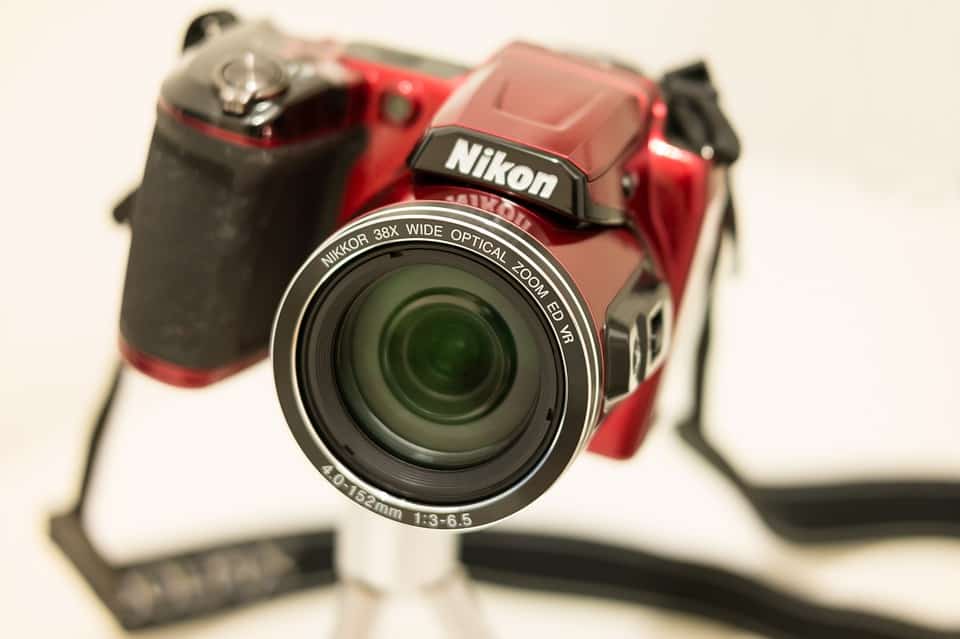
I made the switch to interchangeable lens cameras about 6 years ago when my Panasonic Bridge Camera fell to pieces. I have long felt that these super useful cameras are overlooked when most people think about buying a camera.
What is a bridge camera? A bridge camera is a bigger and often better version of the point and shoot. They, typically, offer the user more control over the images that they take, and they act as training wheels for those who want a DSLR or mirrorless camera but aren’t quite ready to make the financial commitment or time commitment to those.
Our recommended budget for this kind of camera would be $1,000 – $1,500. Otherwise, stick to your phone.
The three manufacturers with good quality bridge cameras are Nikon, Panasonic, and Sony. Sensor sizes are typically 1” to APS-C. You won’t typically find a bridge camera with bigger sensors.
What do we like about bridge cameras?
- Huge zoom ranges. Bridge cameras can offer up to 18 mm to 1,200 mm lenses! That’s an insane amount of zoom and you could almost photograph a snail on a house in the next town from your front garden with it.
- DSLR training. They look like and are laid out like DSLR and mirrorless cameras. If you want to get to grips with making better images, there’s no easier way to learn.
- Point and shoot is fine too. My experience with a bridge camera is that the auto-focus and automatic modes are very good. You can get great shots whilst being too lazy to do all the fancy DSLR stuff.
- They look professional. You’ll have no problem wangling that press pass with a bridge camera dangling from a neck strap.
- They’re so much fun. Easy to use means more time photographing and less time playing with controls. These cameras are a blast to use.
- They’re quite light. Bridge cameras aren’t as lightweight as the point and click cameras, but they are lighter than their DSLR/mirrorless equivalents including the lenses to cover the same range of focal lengths.
Here’s what we’re not so keen on:
- Smaller sensors. This is no big deal unless you like to print large, the sensors are bigger than smartphones by a long way. But it’s a minor niggle all the same. It’s what convinced me to move to a DSLR.
- Can’t change the lens. The lenses are usually pretty good, but you are stuck with the lens that it comes with.
- Repairs are hard to come by. Once the warranty expires – you can pretty much forget getting your bridge camera repaired. When it dies, as mine did at a butterfly farm in Cambodia, it dies.
- Big zoom ranges still hurt image quality. This won’t change. The bigger the zoom range, generally, the lower the overall image quality. Also, they can lead to smaller apertures too.
Having said all this. We still rate bridge cameras highly and if you’re thinking you need a DSLR but have never used anything more than your smartphone or an old film point and click – a bridge camera may be much accessible and get a lot more use than a DSLR.
Our choices: I loved my Panasonic bridge camera and if it hadn’t broken, I’d probably still be using it now. I don’t regret my decision to move up, the bridge camera had taught me enough to make the leap but I can say that if I had just bought a Canon DSLR as my first camera – I’d have been one of those people who just abandoned it in a closet thinking it was too complicated to get to grips with.
The ”Professional Camera” – DSLR or Mirrorless?
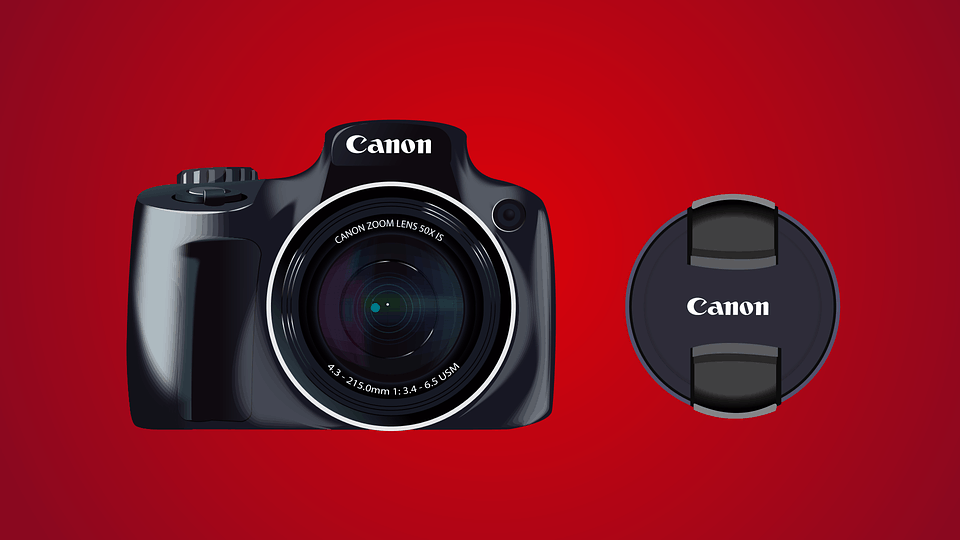
Firstly, it’s worth noting that there are plenty of professional photographers who don’t shoot with a DSLR or mirrorless camera. However, these are the cameras that look most like the image people have of a professional camera and here we are talking about cameras that have interchangeable lenses.
When you’re deciding what system to buy into – the first thing you’re probably going to have to think about is whether you will buy a traditional DSLR or a shiny new Mirrorless camera.
They both have their advantages and disadvantages and their proponents could argue all day long over these. Here’s a quick look at the things we think are most important:
DSLR Cameras For the Digital Nomad – The Pros
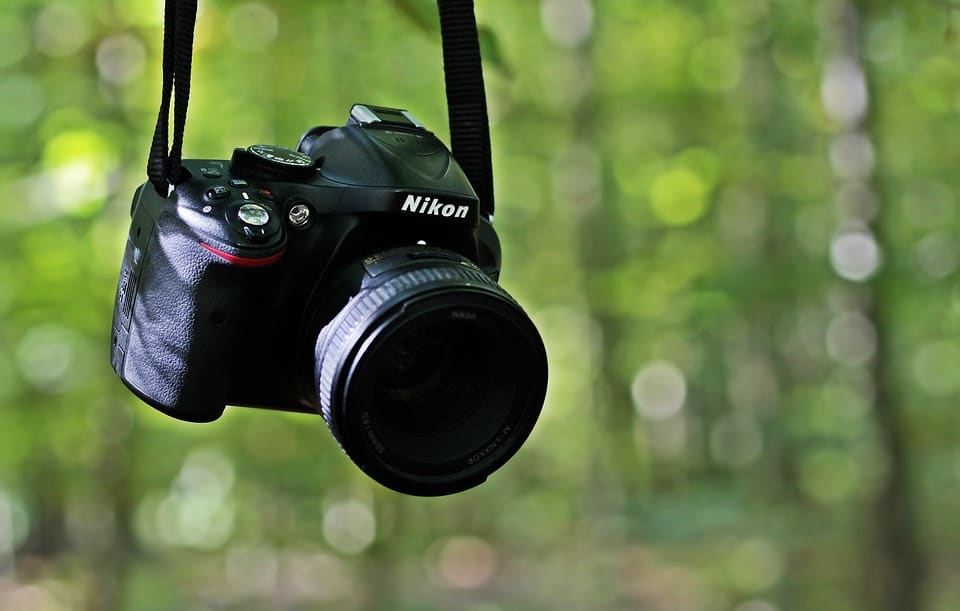
- DSLRs have been around a long time and are going nowhere. Almost all major manufacturers have a DSLR range.
- Secondhand market. Want cheap lenses and bodies? The best way to acquire them is on the second-hand market. We suspect that lens prices, in particular, will fall as mirrorless gains popularity.
- Support and training. When something’s been around forever – you know that it’s going to get a ton of support and this is true, if you want training or YouTube help, DSLR has a big back catalog of this.
- These cameras tend to feel rugged and well-built and, generally speaking, they all are.
- Like for like, at least, these cameras are going to be cheaper than their mirrorless equivalents even brand new.
- They take fantastic images. The best images you’ve seen from the last 10-20 years have almost all been taken with cameras like these.
- Slight auto-focusing advantage, maybe? We don’t want to get caught in this debate. However, it’s true that auto-focus on DLSRs is generally considered to be better than on mirrorless cameras.
- Optical viewfinders are best for sports. If you want to take sports photos, you may prefer the optical viewfinder of a DSLR as it allows for much faster subject tracking than an electronic viewfinder.
- Battery life. Mirrorless battery performance is improving and Sony claims to be about level with the DSLR manufacturers but for now, battery life is normally better with a DSLR.
- Better for larger hands? They are bigger than mirrorless models but if you have huge hands, this may be an advantage. (Note: I have hands the size of dinner plates and have had no issues using either but some folks say this is a big deal.)
- Lens ranges. There are so many more lenses available for DSLRs than for mirrorless cameras. This reflects the fact that they have been around forever and the fact that many film lenses for SLR cameras can work just fine on a DSLR body. However… we’d point out that most can also be used on a mirrorless camera if you use an adapter.
- The professional look. This can be a big deal if you want to be taken seriously as a big pro-looking camera can open doors for you as a photographer.
DSLR Cameras For The Digital Nomad – The Cons
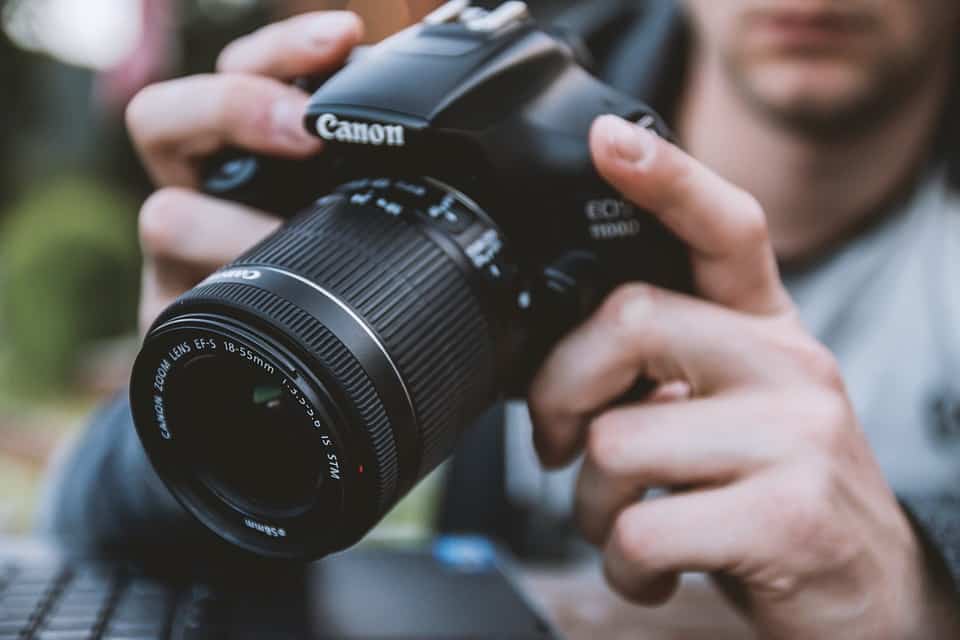
- They’re bigger and heavier. No getting around this. If you want something light to travel with (and many digital nomads do) – mirrorless is probably the way to go.
- They are going to be “somewhat dated” in a few years’ time. The market is going mirrorless and while we don’t expect DSLR to die, we do expect the market to shrink considerably and this may end up hurting your ability to sell things for decent prices on the secondhand market.
- Lenses are restricted by physical limits. Check out the glass at the highest end of mirrorless (and it’s not cheap) and you can see that losing the mirror can allow for much faster glass even if, for now at least, it costs a fortune.
- Eye auto-focusing isn’t there. This is a mirrorless thing, really, due to limitations with software development, Canon thinks they may have cracked this on their upcoming (at time of writing) 90D prosumer model but we’ll have to wait and see.
- No electronic or hybrid viewfinders. This is because mirrored systems have never needed them.
- Video is harder. There’s no doubt in our minds that if video is a key priority for you – mirrorless does it better. Lenses are quieter, focusing is better, etc. mainly because mirrorless lenses are brand new and designed with video in mind. Most DSLR lenses were not.
A Quick Digital Nomad DSLR Field Report
For the last 2-3 years, I was lugging a Canon 6D, 5 lenses and a tripod around the world with me. It was a great camera and took spectacular images. The downside? It was heavy. In fact, it was so heavy that I often left it at home when I should have taken it with me.
I bought a cross-body strap because a neck-strap would have caused injury and that was better but the endless thump of the camera against my waist was also annoying.
I also found that sometimes the friction between me and the camera would switch a lens from auto-focus to manual-focus and it cost me a bunch of shots.
In the end, I realized that as much as I loved Canon and the images it made, I was wasting my chance to enjoy photography because of its form factor.
If you don’t mind the chunkiness of DSLR, there’s so much to recommend it, and I think, for a budget-conscious photographer, it’s still the best way to go.
However, I don’t regret saying goodbye to my full-frame DSLR and opting to go with a much smaller mirrorless APS-C system.
The good news? I sold the Canon stuff for pretty much what I’d paid for it (buy second hand and grey market and the value barely changes over time) and that paid for my nice new Fuji system in full. Yay!
Mirrorless Cameras For the Digital Nomad – The Pros
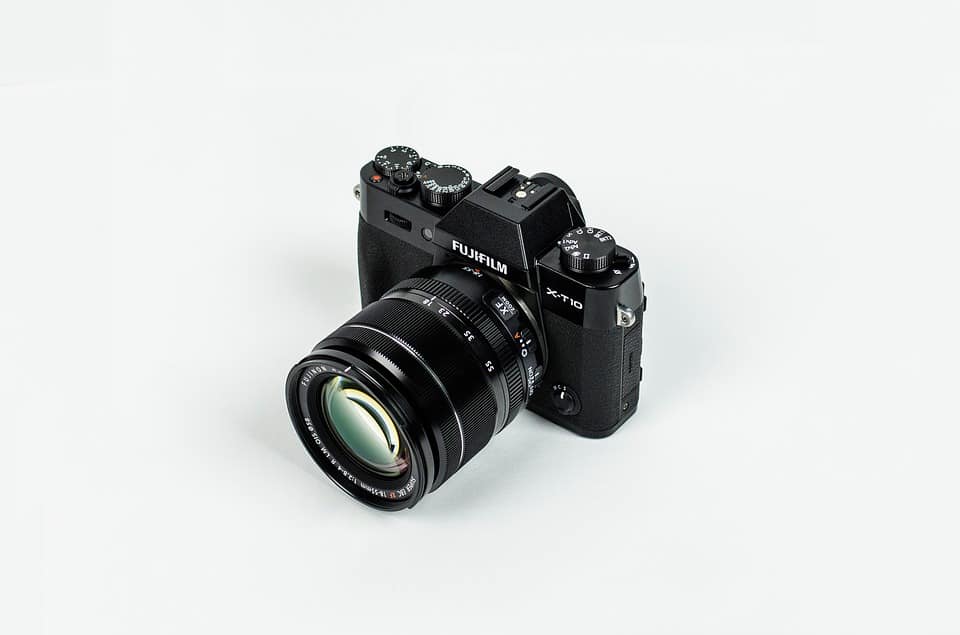
- Shiny and new! While not fresh as a daisy anymore, mirrorless is still a relatively new approach to technology. There are lots of exciting events coming from all manufacturers and lens roadmaps are thrilling for the next few years. It’s exciting to use mirrorless.
- Size of bodies. The mirrorless bodies are all much smaller than their DSLR equivalents, this is because they don’t need space for the whole mirror set up in front of the sensor. This also means they weigh less too. It’s worth noting, however, that lenses aren’t much smaller (between equivalent systems – APS-C lenses are smaller than full-frame, for example), so don’t get carried away with the how much weight you think you’ll save.
- They take fantastic images. There’s no tradeoff in image quality and while photographers on either side of the debate will claim their side is “best”, they’re both excellent and more than good enough for serious photography work.
- Electronic viewfinders. Though not all mirrorless cameras have a viewfinder at all (some of these allow you to add a viewfinder and others assume you’ll rely on the big screen on the camera instead). That means a lot of information to hand when you take the shot and it’s clear what your exposure will be.
- Awesome eye-auto focusing. This is a mirrorless trick so far and one that DSLRs just can’t pull off. If you photograph a lot of people, this will make life much easier.
- The future. There’s no doubt in our minds that the professional camera market is now going mirrorless. If you want to future proof your investment to sell later, this is a great way to do it.
- Video-tastic. This is more luck than judgment, but the youth of mirrorless systems means that they were designed with shooting video in mind.
Mirrorless Cameras For the Digital Nomad – The Cons
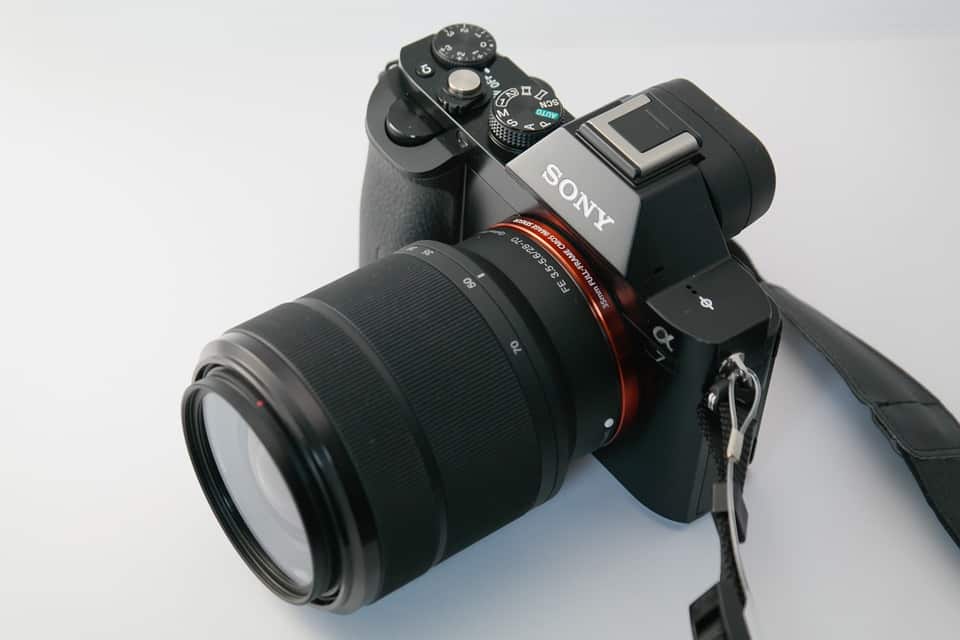
- Battery life. Sony claims aside, battery life is noticeably worse with mirrorless cameras compared to DSLRs. This wouldn’t be a big deal as you can buy and carry spares but they’re not cheap…
- Smaller lens line ups. This won’t bother most photographers. Digital nomads are likely to carry the holy trinity of zooms (16-35, 24- 70 and 70 – 200 full-frame equivalents) or the holy trinity of primes (35, 50 and 85 full-frame equivalents) and you can get both of these easily enough for any system.
- Size of lenses. They’re not really much smaller (if at all) then their DSLR equivalents.
- Not so good at sports, yet. Sure, there are a couple of outliers but there’s a reason that 90% of shooters at the Superbowl are carrying Canon and the others have Nikon and it’s not because mirrorless rocks at sports.
- Optical viewfinders are hard to come by. In fact, most mirrorless only offer an EVF with some offering a hybrid (an optical with an electronic overlay). This isn’t a biggie in most situations, but sports and wildlife photographers may come to miss an optical viewfinder.
- Less support and training. It’ll come but it’s not here, yet. Training for specific cameras is therefore often a bit more expensive than with DSLRs if it’s available at all.
Overall – The Professional Choices For Digital Nomad Cameras
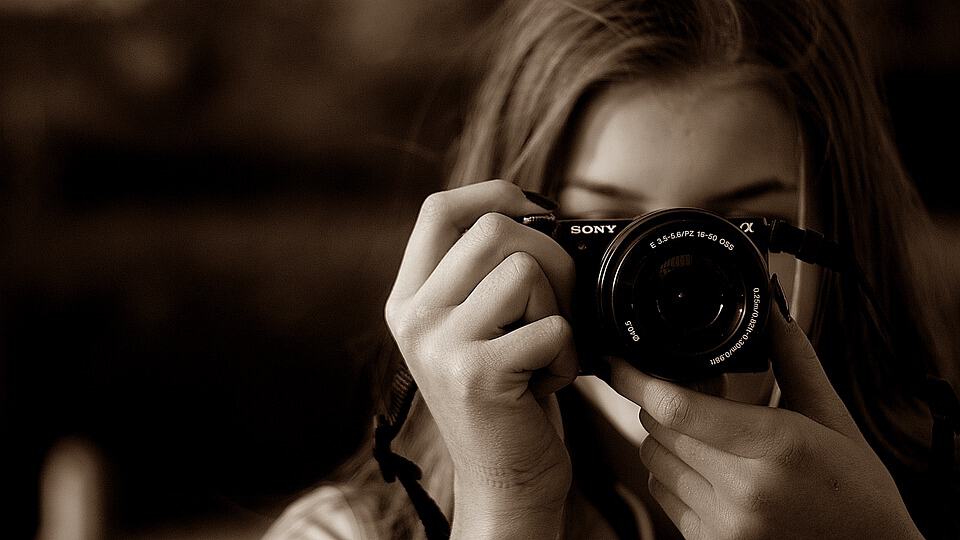
You can’t go wrong with either system. They all take great images and while DSLRs may not be perfect at video, they’re often more than good enough too.
So, it’s best to choose a camera based on your needs and the way the camera feels in your hands. Sony is widely-considered to make the best cameras out there, but I really don’t like the way they look or the way their menus work. This doesn’t make them bad cameras, but they’re not right for me.
If you have a specialist use that you want a camera to handle – read up on it before you buy. Sports, wildlife and macro are the big ones but anything that may require lowlight handling may need some fairly specific kit.
Macro, for example, is best done at home with clamps, stands, a ring flash (not cheap), remote triggers, etc. It is much harder than you think it might be (and hand-holding is ridiculously challenging) and much more expensive than just buying a camera and a lens would suggest.
Our Choice:
While the Fuji X100F could fit in this category, I’ve already looked at it under “point and shoot”. We do have another Fuji, though, and it’s the X-T30. This is a mirrorless interchangeable lens camera which I use when the X100F just won’t do.
For example, the ability to use my 55-200 (75 – 300 mm full-frame equivalent) lens was a godsend on our recent trip to Ha Long Bay. The 23 mm (35 mm full-frame equivalent) on the X100F just wouldn’t get me close enough to the action to make it worthwhile.
I have a bunch of lenses – the 18-55 and 55 – 200 zooms are the ones I use most of the time. The 6.5 mm and 12 mm manual focus lenses I use are great for shooting fisheye and ultra-wide. Then I have a manual portrait and a manual street lens too. I may end up ditching the last two as I rarely, if ever, use them.
Medium Format And Large Format For Digital Nomads
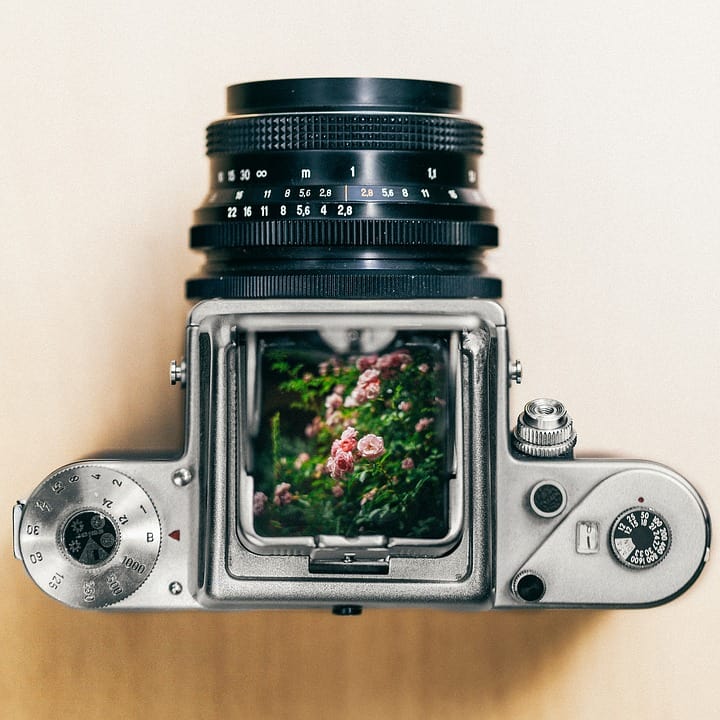
These two choices seem highly unlikely for a digital nomad looking for a first camera. Large format may be the “best sensor size” (if best = biggest) but digital resolutions are still very low, and the costs of the setup are in 6-figures.
You know already if you’re going to do large format photography as a digital nomad and you’re rich too.
Medium format is also expensive though it is coming down in price. Until recently it was for studio photography only, but the new Fuji GFX models are making a “walk-around” medium format style possible.
However, at a starting price of roughly $5,000 for a body and $2,000 for a lens, for the moment, medium format remains a very professional choice. If you’re reading this article, the odds are your photography’s not quite there, yet.
Neither is mine.
Conclusion – How To Choose The Right Camera As A Digital Nomad
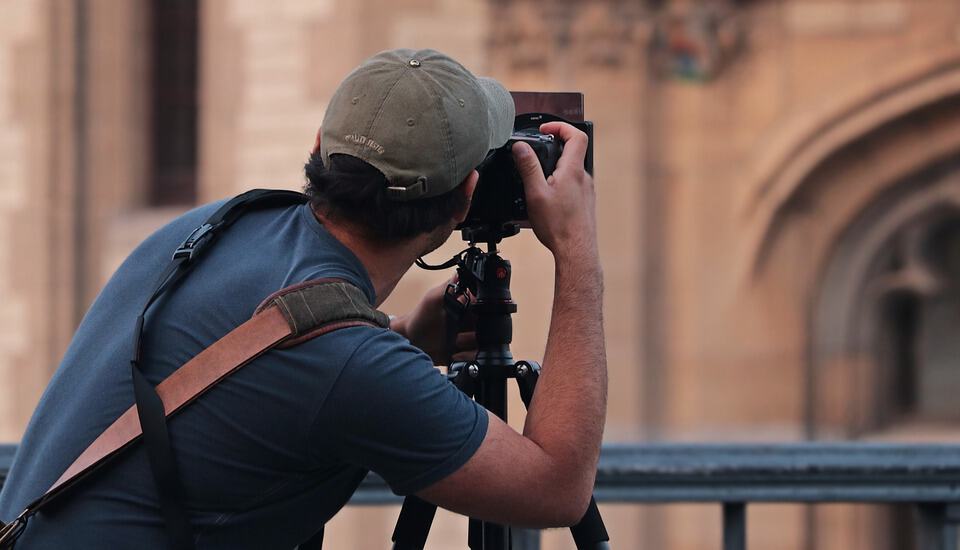
We feel that the vast majority of digital nomads will be best served by their phone cameras. They’re great for Facebook and Instagram and add no real weight to your bag because you were going to carry a smartphone anyway.
Many others who want “just a little more” would be served best by a point and shoot or a bridge camera. This offers less of a learning curve, a lower cost of entry and great images.
Then there will be those who need to make a decision between DSLR and mirrorless. It’s a tough call and we do recommend buying secondhand kit where possible because then you can always sell it again if it’s not right for you.
We hope our guide has helped explain the differences and some of the advantages of each camera type. We could go on forever with this but then we’d become a photography blog rather than a digital nomad one.
